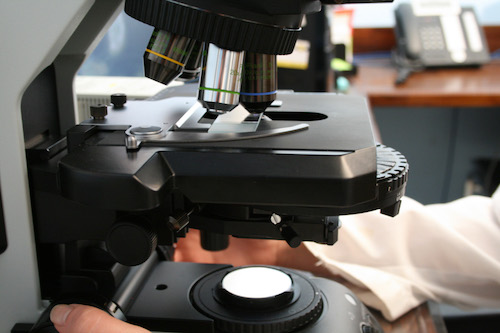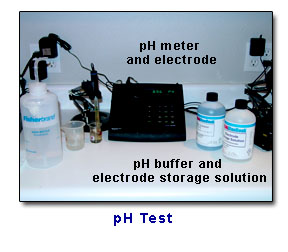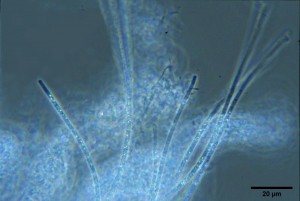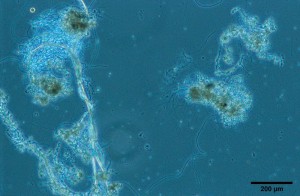Articles
Recent Articles

Features of a Wastewater Microscopic Evaluation
The purpose of a microscopic evaluation is to determine the biological health of a wastewater treatment system. The results can be used to help predict Biochemical Oxygen Demand (BOD), Chemical Oxygen Demand (COD), TOC, and TSS results or to determine whether or not...

pH Testing in Wastewater Treatment
The pH of the environment has a profound effect on the rate of microbial growth. pH affects the function of metabolic enzymes. Acidic conditions (low pH) or basic conditions (high pH) alter the structure of the enzyme and stop growth. Most microorganisms do well...

Dissolved Oxygen Uptake Rate (DOUR) Test
Biological waste treatment in the Aerated Stabilization Basin (ASB) process and in Activated Sludge systems is based on the ability of microorganisms to utilize dissolved oxygen in the process of breaking down the soluble organic substances present in the process...

Troubleshooting Aerated Stabilization Basin
Aerated Stabilization Basin (ASBs) performance can be associated with numerous root causes, both chronic and intermittent. The three main conditions leading to loss of system performance and potential permit violations are discussed below. Temporary upsets due to...

Filamentous Bacteria in Aerated Stabilization Basins Part 2
Concern or Curiosity? Part 2 - Thiothrix and Type 021N Mike Foster, Principal Consultant - Environmental Business Specialists, LLCPaul Klopping, Principal Consultant - Callan & Brooks In part one of this series, we discussed the differences between activated...

Filamentous Bacteria in Aerated Stabilization Basins: Part 1
Filamentous bulking has long been the bane of activated sludge operations. Biomass or sludge bulking is generally defined as mixed liquor with a Settled Volume Index (SVI) of >150 ml/g. However, sludge bulking does not definitively translate to a sludge bulking...
Featured Articles
No Results Found
The page you requested could not be found. Try refining your search, or use the navigation above to locate the post.
